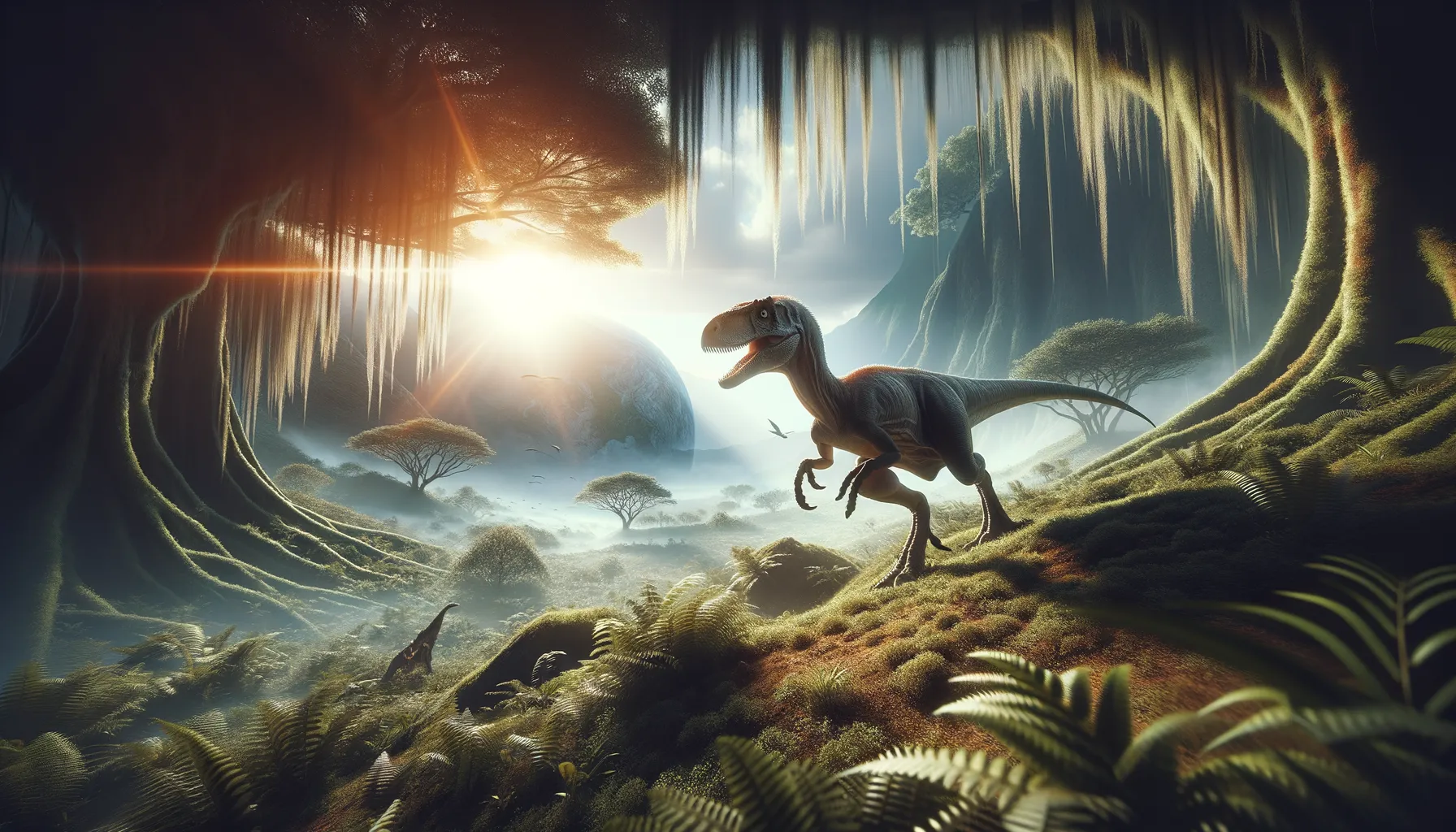
Eousdryosaurus
Small, swift, and savvy for survival.
Period
Jurassic
Length
Measured approximately 2 meters in length.
Height
Roughly 1 meter tall at the hip.
Weight
Estimated to weigh about 20-30 kg.
Eousdryosaurus was a small, fast-moving herbivorous dinosaur that roamed the prehistoric landscapes of what is now Europe. Known for its slender build and long legs, this dinosaur was well-adapted to evade predators and browse for lower vegetation. Its discovery in Portugal has provided valuable insights into the diverse ecosystems of the Jurassic period, highlighting the intricate web of life that existed millions of years ago.
Diet
Eousdryosaurus was a herbivore, primarily feeding on low-lying vegetation. Its diet likely consisted of leaves, ferns, and other soft plants, making it well-suited to the forested regions it inhabited.
Hunting
As a herbivore, Eousdryosaurus did not hunt for prey. Instead, it foraged for plants, using its beak to nip at leaves and vegetation.
Environmental challenges
Eousdryosaurus faced numerous predators in its environment, which necessitated its ability to run quickly to avoid capture. Additionally, competition for food with other herbivores may have posed challenges, leading to the development of selective feeding behaviors. Environmental changes, such as climate fluctuations, would have also impacted its habitat, requiring adaptability to thrive.
Speed
Eousdryosaurus could run moderate speeds, likely around 20-25 km/h.
Lifespan
Estimated lifespan was around 15-20 years.
First discovery
Eousdryosaurus was first discovered in Portugal in 2007.
Fun Facts
- Eousdryosaurus is a relatively small dinosaur from the Dryosauridae family, making it an intriguing little plant-eater.
- The name 'Eousdryosaurus' translates to 'dawn tree lizard', reflecting its early place in the family tree of Dryosaurids.
- This dinosaur lived during the Late Jurassic period, about 150 million years ago, when giant sauropods roamed the Earth.
- Eousdryosaurus is known from fossils discovered in Portugal, providing important insights into dinosaur life in Europe during the Jurassic.
- Despite being a bipedal dinosaur, Eousdryosaurus was quite swift and likely used its speed to escape predators.
- Its diet mainly consisted of ferns and other vegetation of the time, making it a classic herbivore.
- Eousdryosaurus had relatively long legs, which suggests it was adapted to running fast over open ground.
Growth and Development
Young Eousdryosaurus likely grew rapidly to reach maturity, reducing vulnerability to predators. As it matured, its long legs developed, enhancing its running ability and agility. The growth pattern suggests an emphasis on speed and efficiency in acquiring food and escaping threats.
Habitat
Eousdryosaurus inhabited areas with lush vegetation, providing ample food resources. Its environment consisted of dense forests and open clearings, with a variety of plant species. It likely thrived near water sources, which supported both plant growth and hydration needs.
Interaction with other species
As a herbivore, Eousdryosaurus likely coexisted with other herbivorous dinosaurs, possibly competing for similar plants. Predators such as theropods would have posed significant threats, influencing its social behavior and whether it lived in groups for protection.
Natural lifespan
Eousdryosaurus had a natural lifespan of around 15-20 years.
Reproduction
Eousdryosaurus likely laid eggs, similar to other small dinosaurs of its time. It is possible that they exhibited some form of parental care, although specific behaviors remain unknown. Egg incubation would have been crucial for the survival of offspring.
Social behaviour
Eousdryosaurus may have lived in small groups or pairs, offering defense against predators and increased foraging efficiency. Social interactions would support young development and improve chances against environmental challenges through collective dynamics.
Fossil locations
Fossils of Eousdryosaurus have been predominantly found in Portugal, providing critical insight into its existence during the Jurassic period. The discovery of these fossils aids in reconstructing the paleobiology of small herbivorous dinosaurs in Europe.
